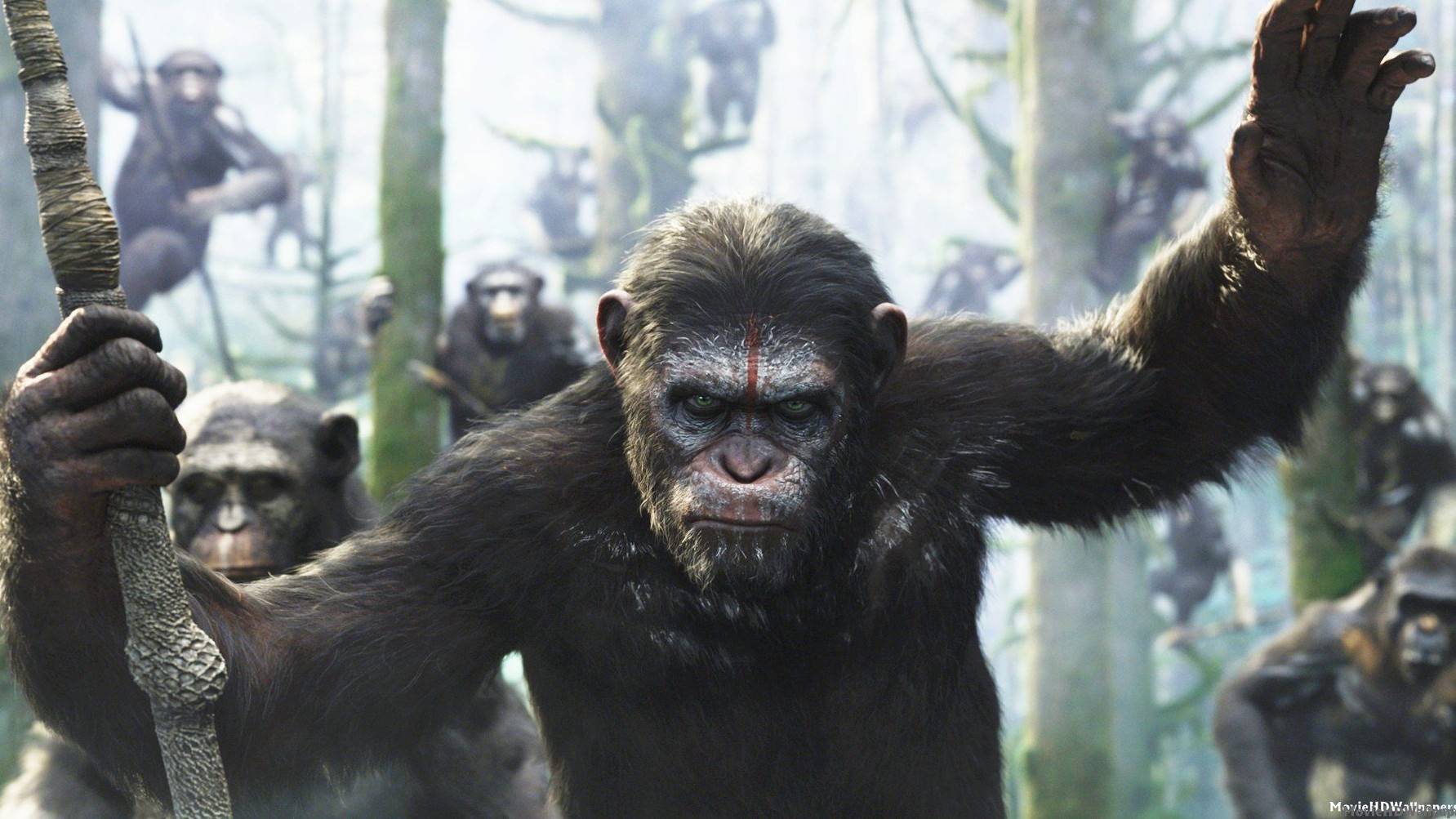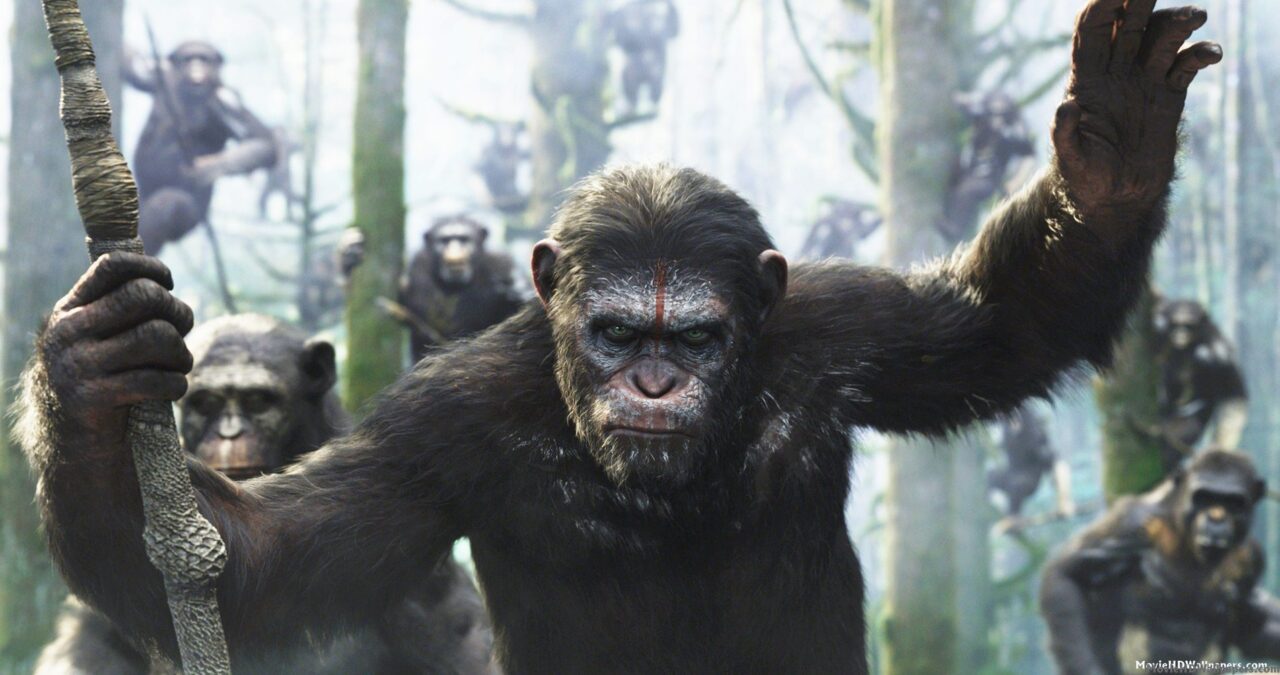Set 10 years after the 2011 reboot Rise of the Planet of the Apes, this year’s installment, Dawn of the Planet of the Apes, features the same cast of ape characters led by Caesar (Andy Serkis) matching up against an entirely new human cast featuring Jason Clarke, Keri Russell, and Gary Oldman in primary roles. Between the events of the first movie and Dawn, a virus has wiped out most of humanity, leaving the last survivors in San Francisco. Simultaneously, Caesar and the apes have prospered in creating a massive new colony. The drama ensues when the humans stumble upon the ape settlement, and it’s inevitable that their tension leads to conflict and battle.
Despite a different look and new dystopian future setting, structurally, this film is quite similar to the last one, and in this case, that’s actually a high compliment. Both movies are advertised worldwide as spectacle action movies, yet the majority of the film is tense, brooding drama between protagonists, and larger metaphors about conflict between species. This is all thanks to how much emotional range is given to the apes, who have never looked more life-like thanks to some of the best visual effects created to date. These stories have given so much room to Andy Serkis, whose contribution to cinema have been astounding us ever since he gave life to Gollum in The Lord of the Rings. As Ceasar this time around, he is a peaceful, contemplative warrior caught between loyalties to various individuals, and is given a rival in the form of Koba (Toby Kebell), who is more war-mongering and human-hating than Caesar. The drama that unfolds ends up being more dynamic than a lot of the action, even though that is still engaging. It’s arguable that Caesar is the most emotionally realized CGI character in the history of film.
It’s arguable that Caesar is the most emotionally realized CGI character in the history of film.
The irony in having so much quality development in the protagonists is that, like Rise before it, the antagonists are all irrationally evil to an absurd degree. It gets to the point where characters take actions that are ludicrous just because they are so committed to being evil. For future installments, I want to see the character development of the villains reach the pristine levels of the heroes of the franchise.
Not only are the visual effects seamless and captivating, the camera work here from Michael Seresin is top-notch, with a handful of shots that are truly jaw-dropping. The greatest shots can tell a story with a single image, and scattered throughout this movie there are more than a handful of shots that speak volumes of mood and plot.
Given that these are meant to be prequels leading to the actual Planet of the Apes, there is a certain inevitability that comes with this whole franchise. It appeared from trailers that this movie would more swiftly move the action toward that storyline, and midway through the film, the writing appears to be on the wall for what will come of humans and apes. But through a turn of events, it’s clear that there will be a much longer string of movies before we see full ape takeover. That means that the value of this episode’s story depends on what happens in the next sequel (due in 2016), but the film only increases curiosity as to what will happen next. Regardless, Dawn continues this series as one of the most unique blockbusters of recent memory, and one with much more emotion and intrigue than ever expected, boding well for the future of the Apes saga.
H. Nelson Tracey
Nelson is a film director and editor from Denver based in Los Angeles. In addition to writing for Cinemacy, he has worked on multiple high profile documentaries and curates the YouTube channel "Hint of Film." You can check out more of his work at his website, hnelsontracey.com


